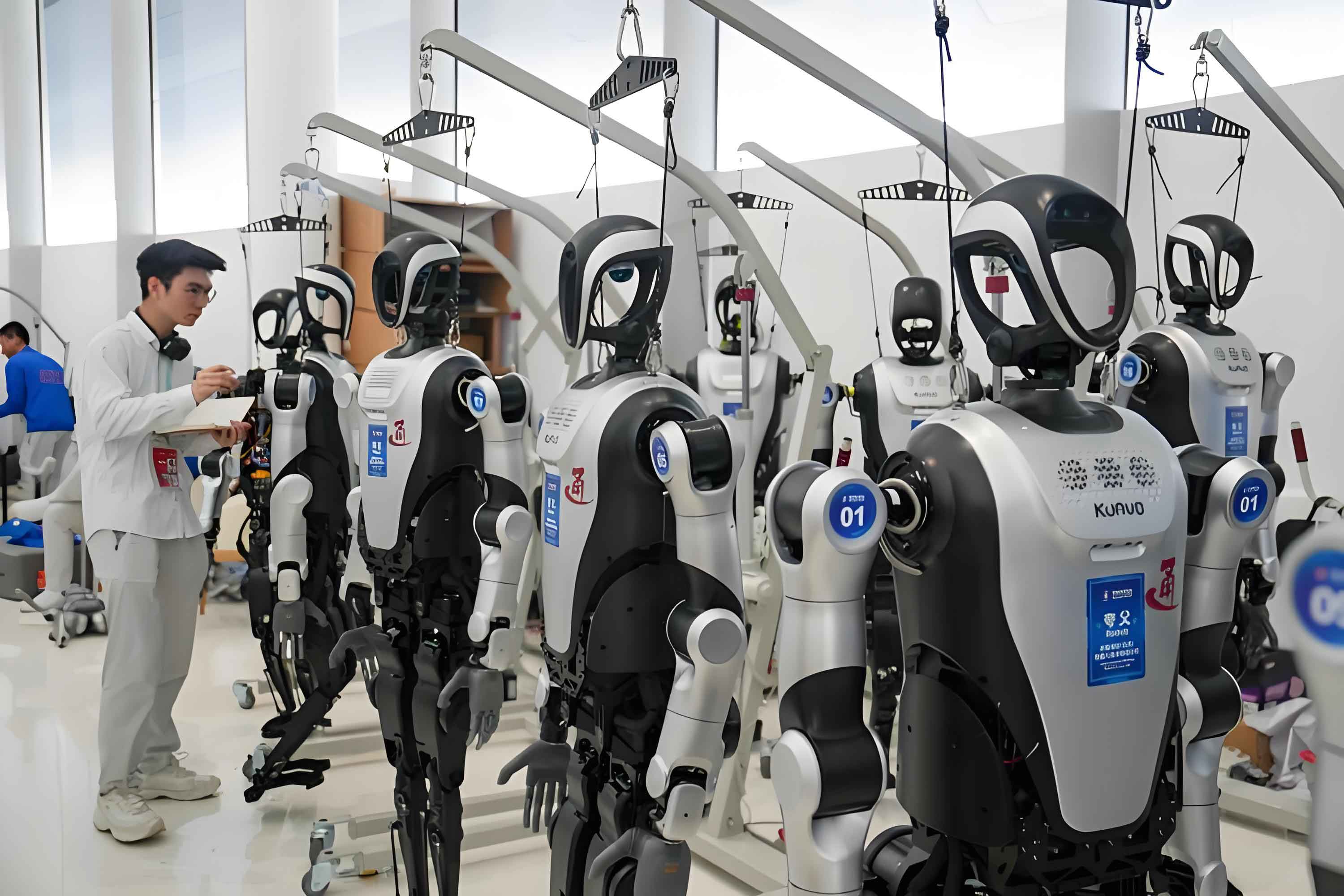Urban centers worldwide are transforming into proving grounds for a technological revolution, as humanoid robots transition from laboratory novelties to dynamic urban collaborators. The race intensified this spring when China’s Walker S1 humanoid robot achieved a landmark 21 km/h running speed while carrying 56 kg—a feat combining unprecedented mobility and utility. With cities from Dubai to Singapore investing billions in robotics infrastructure, the quest for supremacy in the humanoid robot market has become the defining industrial battleground of this decade.

Engineering Breakthroughs Fueling the Surge
The Walker S1 exemplifies the quantum leaps in robotic capability. Its 99% dynamic stability during high-velocity maneuvers and 26% energy efficiency gain over previous models stem from breakthroughs in torque-dense actuators (260.4 N·m) and lightweight exoskeleton design (1.72m height, 20kg frame). These innovations enable humanoid robots to navigate staircases, uneven terrain, and crowded urban spaces—capabilities once deemed impossible. Boston Dynamics’ Atlas and Tesla’s Optimus now face formidable competition as Chinese manufacturers target 300-unit production lines by 2025.
Cities as Living Laboratories
Metropolitan hubs are aggressively deploying humanoid robots to solve critical infrastructure gaps:
- Tokyo’s aging population employs bots for eldercare, reducing caregiver strain by 74% in pilot districts.
- Hamburg’s port utilizes load-bearing humanoid robots for 24/7 cargo handling, slashing operational delays by 40%.
- Dubai mandates humanoid robot security patrols in high-risk zones, integrating facial recognition and threat-assessment AI.
Urban planners highlight a 2025–2027 “automation window,” wherein cities failing to adopt humanoid robots risk economic obsolescence. “The cost-benefit ratio has flipped,” states Dr. Elena Rostova, MIT’s Urban Robotics Lead. “A single humanoid robot now replaces 2.8 human workers in logistics while operating at 14.9 kW efficiency—unthinkable five years ago.”
The Geopolitics of Robotic Ascendancy
Nations are treating humanoid robot development as strategic imperatives. The U.S. CHIPS Act allocates $42 billion for semiconductor supply chains critical for advanced robotics, while the EU’s Robotics 2027 Pact funds 42 cross-border projects. China’s “Dual Engine” policy merges state-backed R&D with private manufacturing giants like UBTECH, aiming for 200+ humanoid robot models certified for public use by 2027.
This competition extends beyond economics. “Who controls the humanoid robot ecosystem controls urban resilience,” warns geopolitical analyst Arjun Mehta. “From disaster response to law enforcement, these platforms will redefine civic power structures.”
Ethical Crucibles and Public Trust
As humanoid robots permeate daily life, cities confront ethical dilemmas. Seoul’s “Robot Rights Charter” mandates force-limiting protocols after a collision incident involving a service bot, while the EU debates liability frameworks for autonomous decisions. Public acceptance varies wildly: Tokyo reports 80% approval for humanoid robot caregivers, versus Berlin’s 45% citing job displacement fears.
Transparency remains paramount. When the Walker S1 logged 20,000 hours of incident-free public interaction in Shenzhen, its open-source safety data boosted municipal trust by 28%. “You can’t deploy humanoid robots by stealth,” asserts robotics ethicist Marcus Thorne. “Communities demand oversight—especially when machines mimic human form.”
Investment Tsunami and Market Projections
Venture capital flooded the sector in 2024–2025, with $8 billion invested globally—a 300% YoY spike. Startups like Sanctuary AI (Canada) and 1X Technologies (Norway) joined industrial titans Hyundai and Toyota in pursuing versatile humanoid robots capable of multitasking across construction, healthcare, and retail. Market analysts project 300,000 units deployed by 2027, generating $260 billion in services revenue.
“Investors recognize that humanoid robots aren’t niche tools,” remarks JPMorgan automation specialist Liam Chen. “They’re the first truly general-purpose automation platform—a physical counterpart to generative AI.”
The Road to Ubiquity
Technical hurdles persist. Battery life remains constrained at 8 hours for high-activity roles, and fine motor skills still lag behind humans by 20% in precision tasks. Yet innovators are sprinting toward solutions: solid-state batteries promise 20-hour operational cycles by 2026, and haptic feedback systems are closing dexterity gaps.
What’s undeniable is the velocity of change. As Walker S1 engineers prepare for 42.195 km marathon trials in 2026, the message to cities is clear: adapt or atrophy. The humanoid robot isn’t merely coming—it’s accelerating through our streets, reshaping our economies, and redefining human potential.
